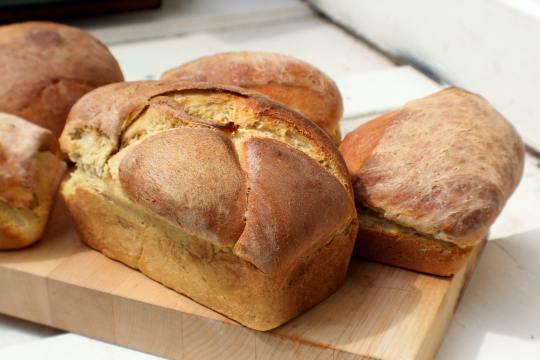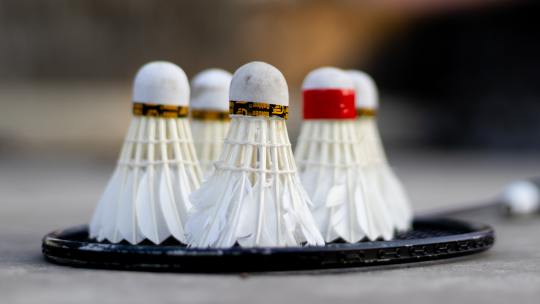Text
T.S. Eliot: The Man, The Myth, The Misogynist...
Reading time: 2 mins
Welcome to T.S. Eliot. A world full of patriarchy and inequality.
Where to start? Well, just putting it out there that I am yet to find a poem by T.S. Eliot that doesn’t contain sexism in one form or another.
First things first, let’s talk about ‘Portrait of a Lady’. Published in 1915, it perhaps comes as no surprise that it has a misogynistic tone.

Amy Hagan says that Eliot’s ‘juxtaposing terms’ to describe the woman in his poem is telling of his prejudice towards women. You only need to look at the shift from referring to her as ‘Lady’ to ‘wench’. Sexism alert. In my opinion, this archaic slur screams misogyny. Wench meaning a prostitute. Just so you know, offense was taken by the way Mr. Eliot.
In his essay, James Warwood details that Eliot’s poems are riddled with a ‘misogynistic treatment’ of women (More than anything, I’m glad that it’s not just me that thinks this). For example, the speaker repeatedly refers to the woman as ‘it’. Fyi: this is very problematic. By referring to this woman as an ‘it’ the speaker is ‘denying [she is] a real person’ and instead, treating her as though she is an ‘inanimate object’.
Ah, the objectification of women – classic 20th Century. In other words, implying that because she is a woman, she is inferior to the male speaker. Hagan also notices this in Portrait of a Lady as she concludes that the Lady is ‘reduced to an object’.
His ‘patriarchal and sexist ideas’ on femininity are also clear in ‘The Love Song of J. Alfred Prufrock’ (1915). Eliot’s opinion on women is made even more obvious in this poem. Especially when the speaker rattles on about the mermaids and how he has ‘heard [them] singing’. Wijangco makes a point of saying that mermaids are thought to ‘prey on men by luring them to the sea using their voices’.

Note to self: don’t confuse mermaids with sirens.
To put it simply, in ‘Portrait of a Lady’ the women are prostitutes and in ‘The Love Song of J. Alfred Prufrock’ women are femme fatales. In both poems, women are portrayed in a negative way. Are you surprised? As I said above, these poems were written in the 20th Century. In fact, Louis Menand decided that Eliot’s work is based on a ‘horror of female sexuality’.

It is implied that Eliot’s poem ‘Preludes’ is about a woman. Particularly in the 3rd section where the speaker says that they ‘curled the papers from your hair’ – an action typically done by women.
So, if ‘Preludes’ (1917) is about a woman, what sort of woman does Eliot present to us?
Well, in the same section, the speaker mentions that the woman has a ‘thousand sordid images’ which is thought to confirm the woman to be a prostitute. These unsavoury images can be seen to represent how the work of a prostitute was considered to be ‘sinful’ as Francesca Cavaliere explains. After all, ‘there is nothing impure in sex – except in the mental attitude to it’.
But why does Eliot present the women in his poems as objects and prostitutes you may be asking? I think that it could have a lot to do with the expected roles for women in society (submissive and dependent on men).
Especially as in her Feminist Manifesto, Mina Loy details that women have a ‘choice between Parasitism’ or ‘Prostitution’… In other words, women in the 20th Century were either wives (a parasite) who needs a host (a man) in order to survive and grow, or alternatively, a prostitute: either way both types of women are reliant on men for financial stability.
All in all, his poems do, to a degree, reflect the misogynistic climate of the 20th Century, they also present his sexist and gendered prejudice views.
#tseliot#womeninliterature#preludes#portraitofalady#lovesongs#misogyny#patriarchy#twentiethcenturyliterature
1 note
·
View note
Text
Is Frankenstein frankly pretty sexist?
Reading time: 2 mins
What is the first thing that comes to mind when you think of Frankenstein? Is it the monster? The mad scientist? The desire for knowledge? Or is it the clear misogyny throughout the novel?
Like all works of literature, Frankenstein is a product of its time. The nineteenth century was one of immense gender inequality and it is no surprise that Shelley’s novel offers very few rights for the women within it. The two main female protagonists in the novel are perfect examples of the ideals of femininity that existed at the time. For example, Caroline is presented as a woman who is seen as incapable of looking after herself, and because of this, requires the protection of a man… *rolls eyes*. Her character acts as a reflection of the position of women within a patriarchal society such as the nineteenth century.
The dependency that women were expected to have on men is shown when Victor states that his father ‘strove to shelter’ his mother. Victor goes on to describe his mother, Caroline, as a ‘fair exotic’, as though she is this fragile and vulnerable flower that relies on the male gardeners care and attention for survival. Oh please.

Not only does this show the almost sub-human status of women during the nineteenth century as she has been compared to an inanimate object, but also explores the archaic values of the time.
Mellor argues that in Frankenstein, ‘women are relegated to the private or domestic sphere’ and the word ‘relegated’ is a very relevant term here. Like your favourite sports team, women’s positions in society is one that is inferior and lower than their male counterparts. The best example of a domesticated woman is Victor’s love interest, Elizabeth Lavenza, who writes in a letter that ‘the blue lake and snow-clad mountains – they never change’. Shelley uses the monotonous scene in Elizabeth’s proximity as a way of criticising the tedious and repetitive lifestyle that women were subjected and expected to lead. The prejudice against women is further shown via Victor referring to Elizabeth as his ‘pretty present’.
So why does Victor expect his fiancé to appear under the Christmas tree?

Well, it has a lot to do with the old-fashioned view that women were seen as the property of their husbands. And like all great misogynists, Victor views her as an object that belongs to him. However, his possession over Elizabeth doesn’t end here. He notes that he ‘looked upon Elizabeth as mine – mine to protect, love and cherish’. Alexander asserts that in Shelley’s time, the ‘ideal woman is a subjugated woman’, one that is submissive and conforms to the outdated stereotypes. Blah blah blah.
I don’t know if you’ve noticed but almost all of the women in Frankenstein die.
Why is that you ask? It might be because their deaths happen to contribute to the storyline, or it might be because Frankenstein is inherently sexist. If we agree that Frankenstein is a reflection of the society it is set in, then it is unsurprising that none of the female characters survive. In other words, this isn’t a coincidence….
Caroline = dies.
Justine = executed.
The creature’s female companion = ripped apart and destroyed by Victor.
Elizabeth = murdered.

So, what does this say about femininity?
More specifically, what does it say about English femininity?
As the only women who survive Shelley’s brutal killing spree are Safie and Agatha. It is important to note that neither of them are English – Safie is Turkish and Agatha is German.
By showing the other female character’s passivity, Shelley simultaneously critiques stereotypes imposed on women within the English society that she herself was subjected to.
#frankenstein#maryshelley#womeninliterature#victor#fairexotic#elizabethlavenza#victorfrankenstein#caroline frankenstein#femininity
3 notes
·
View notes
Text
A Tale of Two “Titties” (If You’ll Excuse the Pun)
Reading time: 2 mins
Side note: I realise that the title is quite out there, but I saw the opportunity and couldn’t resist. Ah the Victorian era… A period responsible for penny-farthing bicycles and rigid roles for the sexes
Although Dickens wrote A Tale of Two Cities in the midst of Queen Victoria’s reign, its setting of the French Revolution is central to the values that are explored within the text. That is to say, the age-old idea that men were the so-called breadwinners and women, the damsel in distress springs to mind.

In many ways, I think that Lucie Manette and Elizabeth Lavenza in Shelley’s Frankenstein would be the bestest of friends. Why is this? Well, for starters, both women are very passive in nature and when I say very, I mean very. Their characters aim to portray the stereotypical woman of the 18th & 19th Century. Noor states that Lucy is presented as a ‘gentle, fragile and delicate woman’.
Are you surprised by her portrayal? This is the Victorian period we are talking about here…
The passive nature of Lucie is shown in Chapter XIII of the Second Book where Mr. Carton asks her ‘Will you hear me?’ and she replies, ‘If it will do you any good…if it would make you happier, it would make me very glad!’.
This dialogue says a lot about the expectation of women’s behaviour. This is because it presents Lucie as a character who conforms to the ideals of femininity at the time. She agrees to listen to Mr. Carton, not because she wants to, but because she is aware that it will please him. Her compliance to his request reinforces her submissive temperament.
However, not all of the women are like Lucie.
To put it into perspective, if the assertiveness of women in the novel was placed on a scale of 1-10, Lucie would be at 1 and Madame Defarge would be at 10.
Baidya argues that in contrast to Lucie, Madame Defarge is a character who is not ‘one of the stereotypical women’ nor is she ‘the ideal Victorian woman who remained in the house’. So, Lucie and Madame Defarge = polar opposites.
Dickens presents Madame Defarge as a woman who defies and rejects the constraints of the patriarchy. (You go girl). However, despite her resistance she is portrayed in a derogatory way…This is most evident when she is described as a ‘tigress’ and the ‘wife of Lucifer’. Granted, Madame Defarge is a vicious and cunning character, but is it just me or does her animalistic and violent depiction scream misogyny?

Ernest Defarge describes his wife as a ‘strong woman’ (he’s not wrong). Perhaps Dickens is suggesting that because she is a strong woman, she is inherently viewed as wicked and evil because she is independent and therefore, unconstrained. Pretty sexist but hey, like I said, it is the Victorian era.
Anyway, moving on…I have to say, one of my favourite things about Madame Defarge’s character is how she uses knitting, a stereotypical hobby of a woman, to aid her in her role in the French Revolution. In Chapter 5 of Book 1, she is seen taking ‘up her knitting with great apparent calmness and repose of spirit and became absorbed in it’.

Dalfonzo makes a good point that she ‘personifies all the terror and vengeance of the French Revolution’ and as the title of her blog aptly says, Madame Defarge really is, in fact, knitting a revolution. For this reason, Lewis denotes Madame Defarge as an ‘allegory for radical feminism’, as well as portraying the ‘terrifying power of political womanhood’. The irony is that the reason why she is so concentrated on her knitting is not because she is wanting to act like the stereotypical woman. Quite the opposite actually, she is knitting the names of the people who must be executed in the Revolution.

The part that she plays is very unconventional and fails to comply with the traditional idea that women should perform domestic chores.
I will leave this with you: does Dickens punish Madame Defarge for her unconventional actions, yet praise Lucie for her traditional ones?
#charlesdickens#frenchrevolution#womeninliterature#ataleoftwocities#madamedefarge#luciemanette#misogyny
1 note
·
View note
Text
‘MEN AND WOMEN ARE ENEMIES’: ALL OTHER THINGS MINA LOY
Reading time: 2 mins
If you thought that Frankenstein was the ultimate advocation of women’s rights, think again.
Mina Loy confronts the misogynistic ideals of the 20th Century head on and takes no prisoners with her in the process. Christina Walter argues that Loy’s essay, Feminist Manifesto is a direct attack / ‘polemic against women’s subordinate position in modern Western culture’. This is true. You only have to look at the opening sentence of the essay where she comments that the current feminist movement is ‘inadequate’ to see this.
Walter asserts that the Feminist Manifesto explicitly shows her ‘anxiety over modern gender roles’. These gender roles consist of the expected domesticity and passivity of women and the privilege and power that men have. (We’ve heard it all before)
I would like to quickly add that the ideas Loy sets out in her Feminist Manifesto are also seen throughout her long poem, Songs to Joannes. In this, she outlines the ‘war between the sexes’ as Natalya Lusty points out. This is perhaps most evident in Section X of the poem where she uses words such as ‘shuttle-cock’ and ‘battle-door’.

[Photo by Salman Hossain, Unsplash]
Why are these words relevant?
Shuttle-cock and battle-door are used in the game badminton, that’s why. By using these words, Loy suggests a degree of competition between men and women. She outlines the two sexes as opponents of one another. It doesn’t end there. In Section XVII, Loy mentions a ‘battle-field’ which again, supports the idea mentioned above.
The conflict between the sexes continues later on in the same section where Loy says that the process of unnatural selection will end up breeding ‘sons and daughters’ that will ‘jibber at each other’. Jibber is a funny word isn’t it? In this case, I take it to mean bickering.
The suggestion here being that patriarchy is a never-ending system and that these values are passed down the generations. Pretty deep stuff am I right?
Konkol says that in his theory of sexual selection, Darwin ‘naturalizes male superiority’ and that in her work, Loy rejects these mainstream ideas. This is most obvious in Section XXIX where she argues that ‘Evolution fall foul of / Sexual equality’ and goes on to refer to it as ‘unnatural selection’. Here, Loy openly challenges Darwin’s ideas and instead, criticises it for its misogynistic perspective.

[Photo by Eugene Zhyvchk, Unsplash]
This evidently links back to Loy stating in her Feminist Manifesto that ‘Woman is the equal of man - / for / She is NOT!’ These lines show how during this period, women were regarded as second-class citizens. In other words, inequality sucks.
Goody suggests that Loy introduces the ‘debates about the roles and rights of women’ in her work. More specifically, Loy looks into the lack of rights that women had and the roles that they were expected to keep. For example, in Section I, the female speaker admits that as a woman, she ‘must live in [her] lantern… / Of Experience / Coloured glass’. I think it is clear that this imagery shows female entrapment and domesticity within a patriarchal society.
(Think Sylvia Plath’s novel ‘The Bell Jar’)

[Photo by Vladimir Mokry, Unsplash]
The reason why I immediately thought of Plath’s novel is because it, alongside Section I, demonstrate the restrictions women were subjected to 20th Century. Both works use the metaphor of a glass container to represent women’s confinement in patriarchal society. Karin Schalm describes Loy as a poet that ‘radically challenged prescribed gender roles’.
It would be wrong for me to talk about Mina Loy without mentioning her unconventional style of writing. Let me begin by bringing light to the form. The form is very irregular and has countless white spaces between the words and enjambment. Churchill states that Loy manipulates the ‘grammar, syntax, punctuation and layout’ of her poems as a form of resistance against the rigid / traditional expectations of poetry.
Basically, rigid rules of poetry = restrictions for women in day-to-day life.
#minaloy#feministmanifesto#songstojoannes#womeninliterature#misogyny#genderroles#patriarchy#sylvia plath#thebelljar#femaleentrapment#inequality#passivity
2 notes
·
View notes